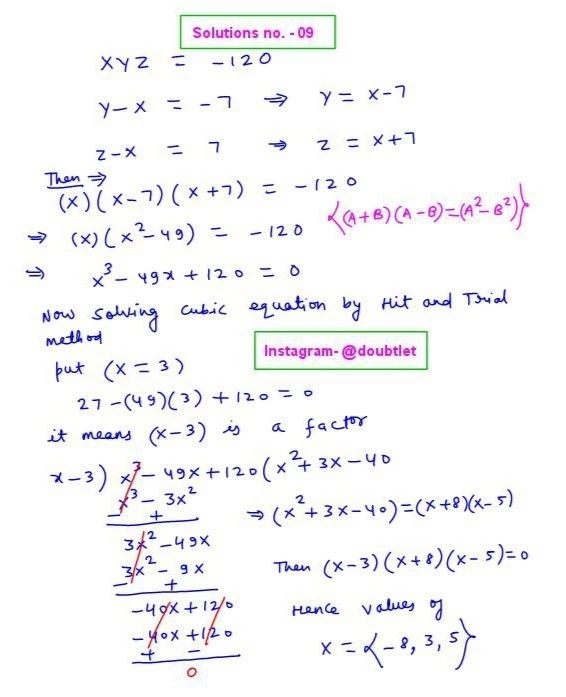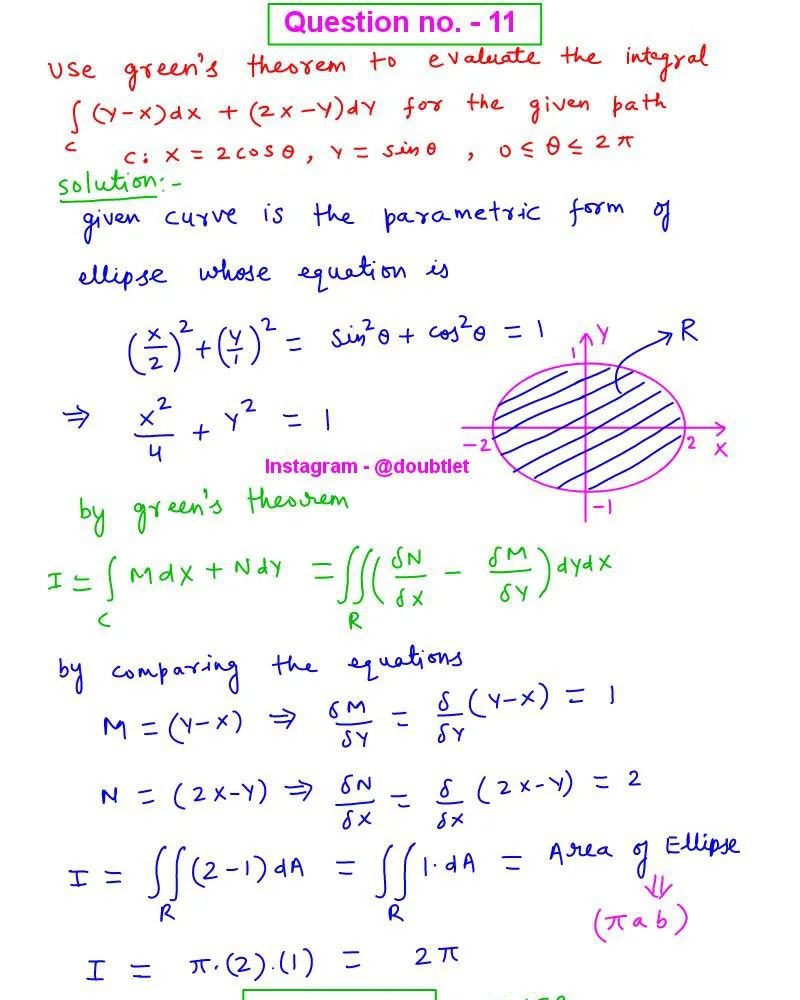
Neetesh Kumar | November 30, 2024
Calculus Homework Help
This is the solution to Math 1D
Assignment: 14.8 Question Number 4
Contact me if you need help with Homework, Assignments, Tutoring Sessions, or Exams for STEM subjects.
You can see our Testimonials or Vouches from here of the previous works I have done.
Get Homework Help
Step-by-step solution:
We are tasked with finding the extreme values of the function f(x,y,z)=4x+4y+7z subject to the constraint 2x2+2y2+7z2=23.
To solve this, we will use the method of Lagrange multipliers.
Step 1: Define the Lagrange Multiplier Equations
The method of Lagrange multipliers involves solving the system of equations:
∇f(x,y,z)=λ∇g(x,y,z)
where ∇f(x,y,z) and ∇g(x,y,z) are the gradients of f(x,y,z) and g(x,y,z), respectively, and λ is the Lagrange multiplier.
Compute the gradients:
- The gradient of f(x,y,z)=4x+4y+7z is:
∇f(x,y,z)=(∂x∂f,∂y∂f,∂z∂f)=(4,4,7)
- The gradient of g(x,y,z)=2x2+2y2+7z2−23 is:
∇g(x,y,z)=(∂x∂g,∂y∂g,∂z∂g)=(4x,4y,14z)
Step 2: Set up the System of Equations
From the Lagrange multiplier condition ∇f(x,y,z)=λ∇g(x,y,z), we have the system of equations:
- 4=λ⋅4x
- 4=λ⋅4y
- 7=λ⋅14z
Additionally, we need to satisfy the constraint:
2x2+2y2+7z2=23
Step 3: Solve the System of Equations
From the first equation, we solve for λ:
4=λ⋅4x⇒λ=x1
From the second equation, we solve for λ:
4=λ⋅4y⇒λ=y1
From the third equation, we solve for λ:
7=λ⋅14z⇒λ=2z1
Step 4: Relate the Variables
Now that we have expressions for λ, we can equate them to find relationships between x, y, and z.
From λ=x1 and λ=y1, we get:
x1=y1⇒x=y
From λ=x1 and λ=2z1, we get:
x1=2z1⇒x=2z
Thus, we have the relationships:
x=yandx=2z
Step 5: Substitute into the Constraint
Now substitute x=y and x=2z into the constraint 2x2+2y2+7z2=23:
2x2+2x2+7z2=23
Since x=2z, substitute x=2z into the equation:
2(2z)2+2(2z)2+7z2=23
Simplify:
2(4z2)+2(4z2)+7z2=23
8z2+8z2+7z2=23
23z2=23
z2=1
Thus, z=1 or z=−1.
Step 6: Find Corresponding Values of x and y
Using x=2z and x=y, we find:
- If z=1, then x=2(1)=2 and y=2.
- If z=−1, then x=2(−1)=−2 and y=−2.
Thus, the possible points are (x,y,z)=(2,2,1) and (x,y,z)=(−2,−2,−1).
Step 7: Evaluate f(x,y,z) at the Critical Points
Now, evaluate the function f(x,y,z)=4x+4y+7z at the points (2,2,1) and (−2,−2,−1):
- At (2,2,1):
f(2,2,1)=4(2)+4(2)+7(1)=8+8+7=23
- At (−2,−2,−1):
f(−2,−2,−1)=4(−2)+4(−2)+7(−1)=−8−8−7=−23
Final Answer:
The maximum value of f(x,y,z) is 23, and the minimum value is −23
Please comment below if you find any error in this solution.
If this solution helps, then please share this with your friends.
Please subscribe to my
Youtube channel for video solutions to similar questions.
Keep Smiling :-)















Leave a comment